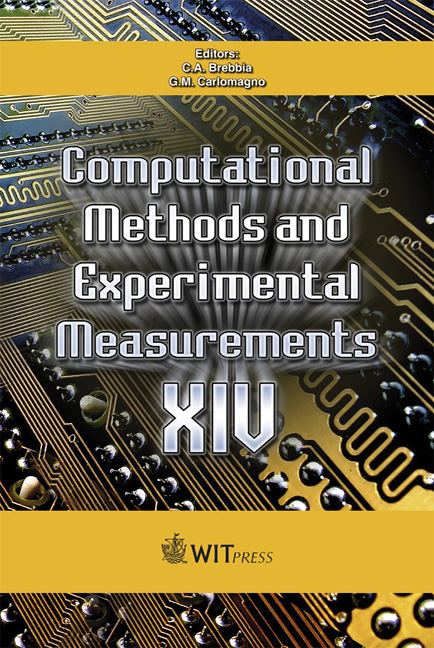On The Differences Of Transitional Separated-reattached Flows Over Leading-edge Obstacles Of Varying Geometries
Price
Free (open access)
Transaction
Volume
48
Pages
11
Page Range
329 - 339
Published
2009
Size
1,008 kb
Paper DOI
10.2495/CMEM090301
Copyright
WIT Press
Author(s)
I. E. Abdalla
Abstract
Large-eddy simulation (LES) of transitional separating-reattaching flow on three different geometries including a square surface mounted obstacle (referred to hereafter as the obstacle), a forward facing step (FFS) and square leading edge plate aligned horizontally to a flow field, has been performed using a dynamic sub-grid scale model. The Reynolds number based on the uniform inlet velocity and the plate thickness, obstacle/step height varies in the range of 4.5 − 6.5 × 103. The mean LES results for three geometries compare reasonably well with the available experimental and DNS data. As the obstacle and FFS are characterised by an additional separated region upstream the separation line compared to the square leading edge plate, this is thought to have led to some differences observed both on the flow topology and turbulence spectrum downstream the leading edge for the three geometries. The spectra obtained using standard Fourier transform for positions downstream the leading edge plate has clearly captured the characteristic shedding frequency but not in the case of the obstacle and FFS. However, the spectra content at locations within the upstream separated region for the obstacle and FFS indicates that the upstream bubble is unstable via the Kelvin-Helmholtz (K-H) mechanism which might have an influence on both the spectra content, instability mechanism and the flow topology of the downstream separated region. Keywords: large-eddy simulation, transition to turbulence, coherent structures, shedding.
Keywords
large-eddy simulation, transition to turbulence, coherent structures, shedding.





